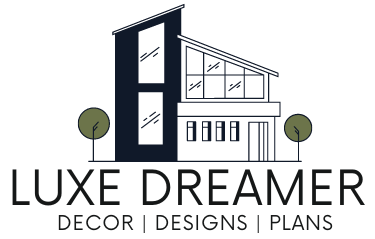I’ve always been fascinated by the idea of living in a tiny home, and I’m far from alone in this curiosity. The tiny house movement, with its allure of minimalist living and the promise of simplifying life, has attracted a vibrant community of enthusiasts.

People worldwide are embracing these compact abodes for their smaller ecological footprints, cost savings, and the deeper sense of community they foster.
Beyond the lifestyle benefits, there are practical considerations too, like zoning and building codes, which vary by location but are increasingly accommodating.
Sorting through legalities isn’t as daunting as it used to be, with many areas updating their guides to be more tiny-home friendly. Some places now allow tiny homes as accessory dwelling units, which can be situated on the same property as a larger home.
This flexibility has made the option of settling into a tiny home more accessible and legally straightforward than in years past.
Exploring Tiny Home Living
In navigating the shift toward minimalist living, I’ve found the tiny house movement offers a unique blend of freedom and sustainability. Let’s look closely at what this movement entails and how viable it is for long-term dwelling.
What is the Tiny House Movement
The tiny house movement champions living simply in small homes. The philosophy is not just about physical space—it’s a call to embrace freedom, intentionality, and simplicity.
For me, tiny living means reducing my environmental footprint while focusing on what’s essential. A tiny home typically ranges from 100 to 400 square feet, drastically less than the average American home.
Embracing this lifestyle can mean a commitment to:
- Reduced consumption: Less space for stuff encourages me to buy less and live more meaningfully.
- Enhanced mobility: Many tiny homes are built on trailers, providing the option to relocate without leaving home.
- Environmentally friendly choices: A smaller space requires less energy for heating and cooling, reducing my ecological impact.
Are Tiny Homes Viable Long Term?
Viability hinges on a few critical factors:
- Design: Smart use of space is essential. Custom-built storage and multipurpose furnishings can make a small area more liveable.
- Legality: Zoning laws differ by area. I had to ensure my tiny home met local building codes and land use restrictions.
- Community: I’ve found that connecting with other tiny home enthusiasts has been invaluable for tips and shared experiences.
Legal and Regulatory Considerations
Before you dive into tiny home living, I want you to be in the know about the red tape. Zoning laws, building codes, and ADU regulations are the big obstacles.
Zoning Laws and Building Codes
Let’s cut to the chase:
Zoning laws can be a pain.
They dictate what you can build and where you can build it.
For my tiny home, I had to check the local zoning ordinances to make sure it was zoned for residential use. And then, there’s building codes. These are the rule books, specifying sizes, types of materials, and safety standards.
Your tiny house will need to comply, whether it’s built on wheels or a permanent foundation. If you mess this up, you might as well be building a treehouse without a tree.
- Zoning Relevance: Residential, commercial, agricultural—each has its limits on property usage.
- Building Codes Checklist:
- Minimum size requirements
- Necessary utilities like electricity and plumbing
- Structural integrity demands
Tiny Homes as Accessory Dwelling Units (ADU)
Now onto the cool part. ADUs, or accessory dwelling units, are your loophole. They’re secondary houses or apartments that share the building lot of a larger, primary house.
Imagine a guest house in your backyard, but it’s my full-time crib. Some places allow ADUs to be rented out, so they’re a double win for property owners looking to make bank.
- What’s an ADU? Think of secondary structures on your property, like a mini-me house.
- How I Went ADU:
- Checked if my town permitted ADUs.
- Ensured my tiny house met all the ADU criteria.
Financial and Lifestyle Implications
Below, I’ll outline the monetary aspects of acquiring a tiny home and the potential economic advantages that follow.
Costs and Financing a Tiny Home
Purchasing or building a tiny home involves several costs that I need to budget for carefully.
Initially, the price tag for a tiny home can range widely depending on size, materials, and amenities. On average, a tiny home could set me back anywhere from $30,000 to $60,000.
To finance my tiny residence, I might explore options like:
- Savings: If I’ve managed to put aside a substantial amount, this could be the most straightforward method.
- Personal Loan: Banks or credit unions may offer personal loans suitable for smaller housing options.
- Manufacturer Financing: Some tiny house makers provide tailored financing solutions for their models.
Since a typical mortgage might not fit the tiny home bill due to the difficulty in securing one for non-traditional homes, these alternatives are worth considering.
The Economic Benefits of Tiny Living
Moving into a tiny home certainly has its perks for my wallet.
Downsizing to a tiny home means:
- Reduced Utility Costs: A smaller space usually leads to lower electricity and heating expenses.
- Minimal Maintenance: Less square footage equates to fewer maintenance tasks and upkeep costs.
- Savings on Purchases: With limited space, I’m more likely to be mindful of my purchases, potentially saving money in the long run.
